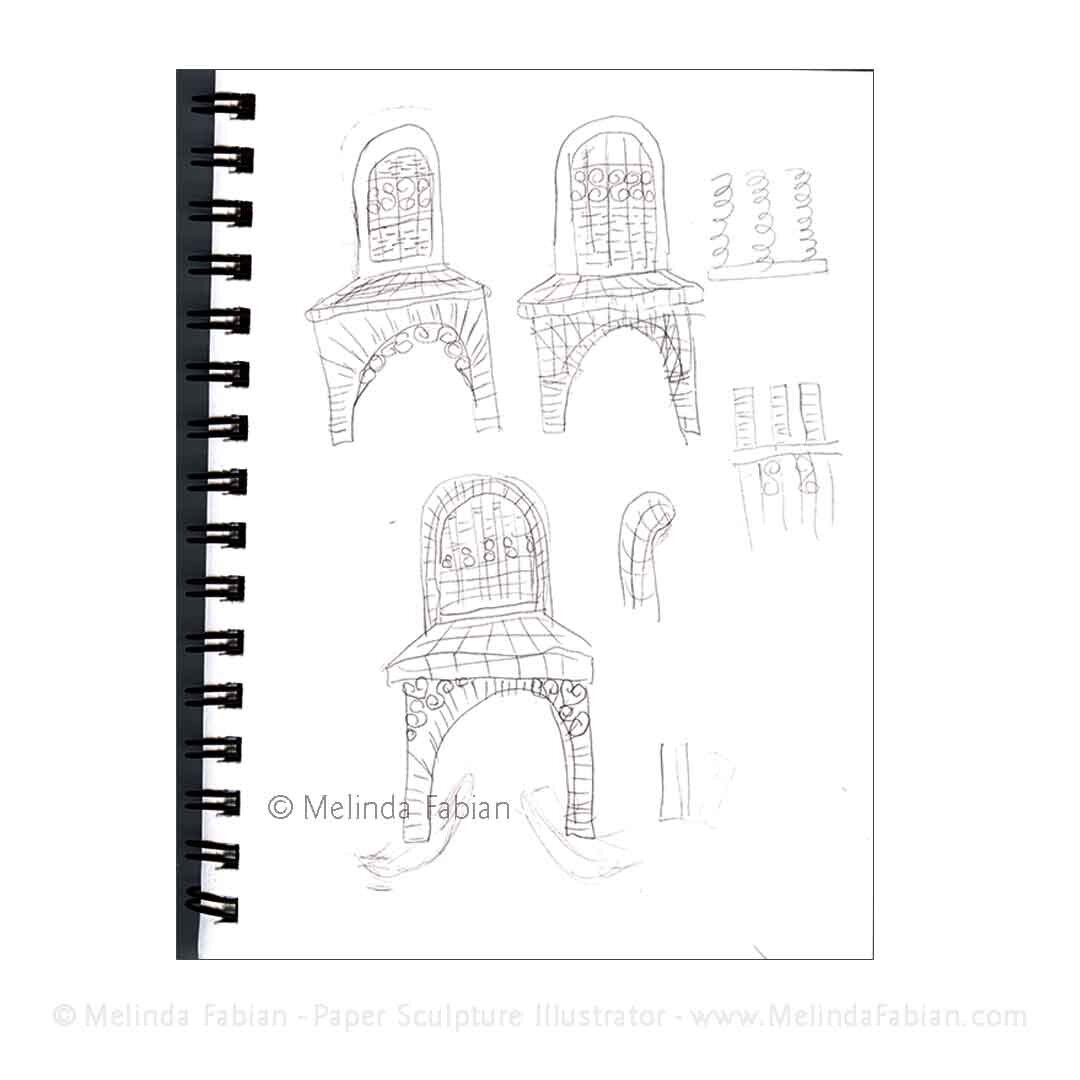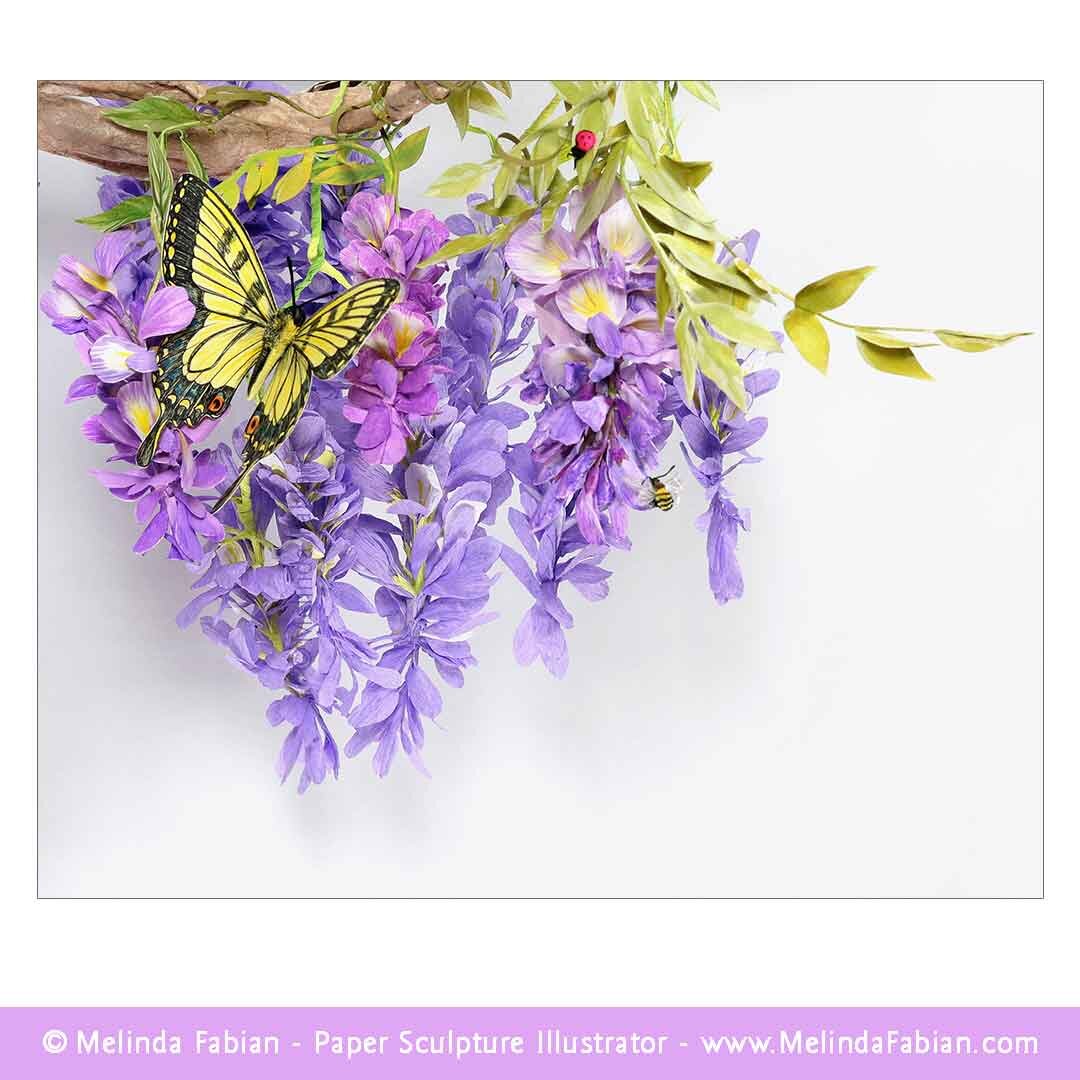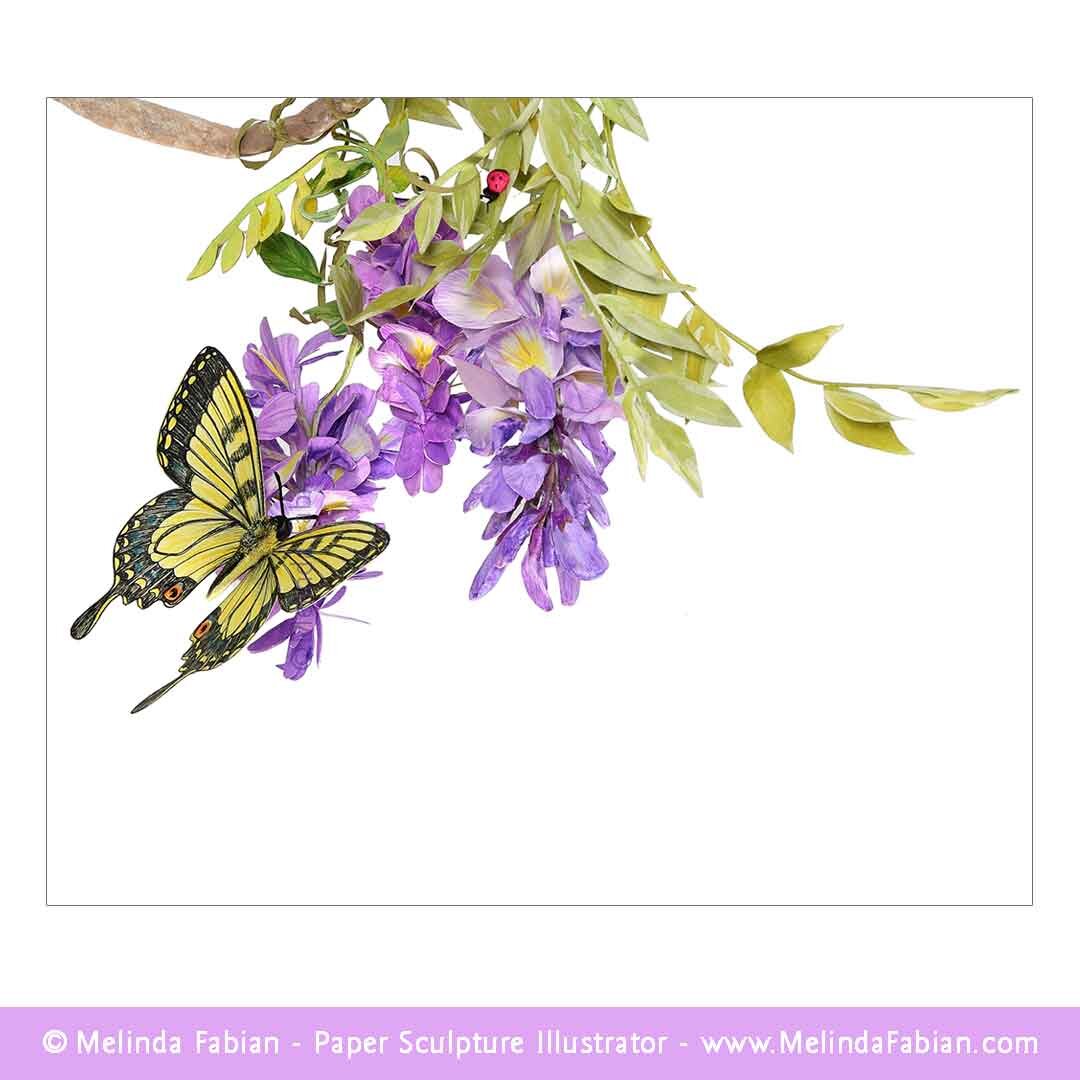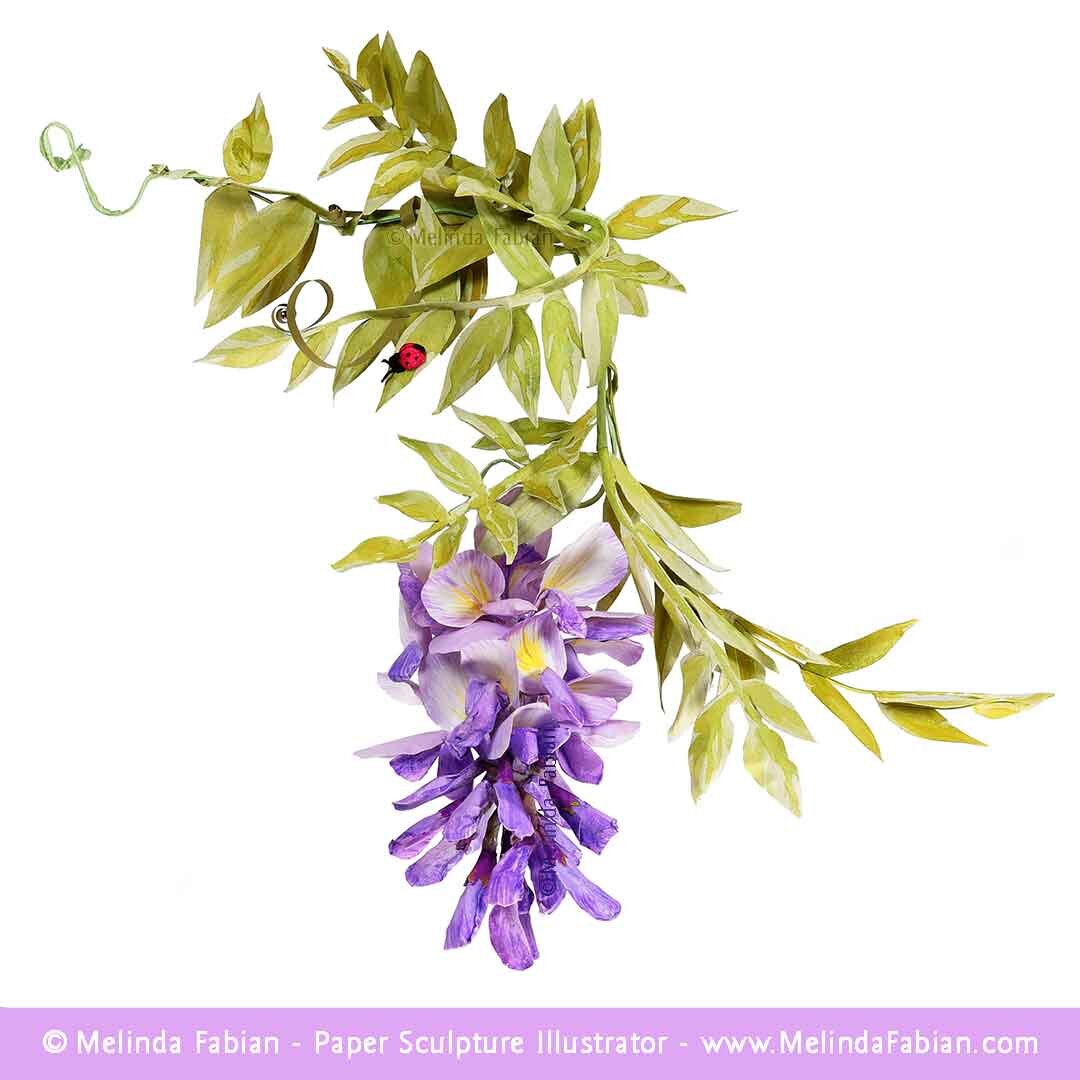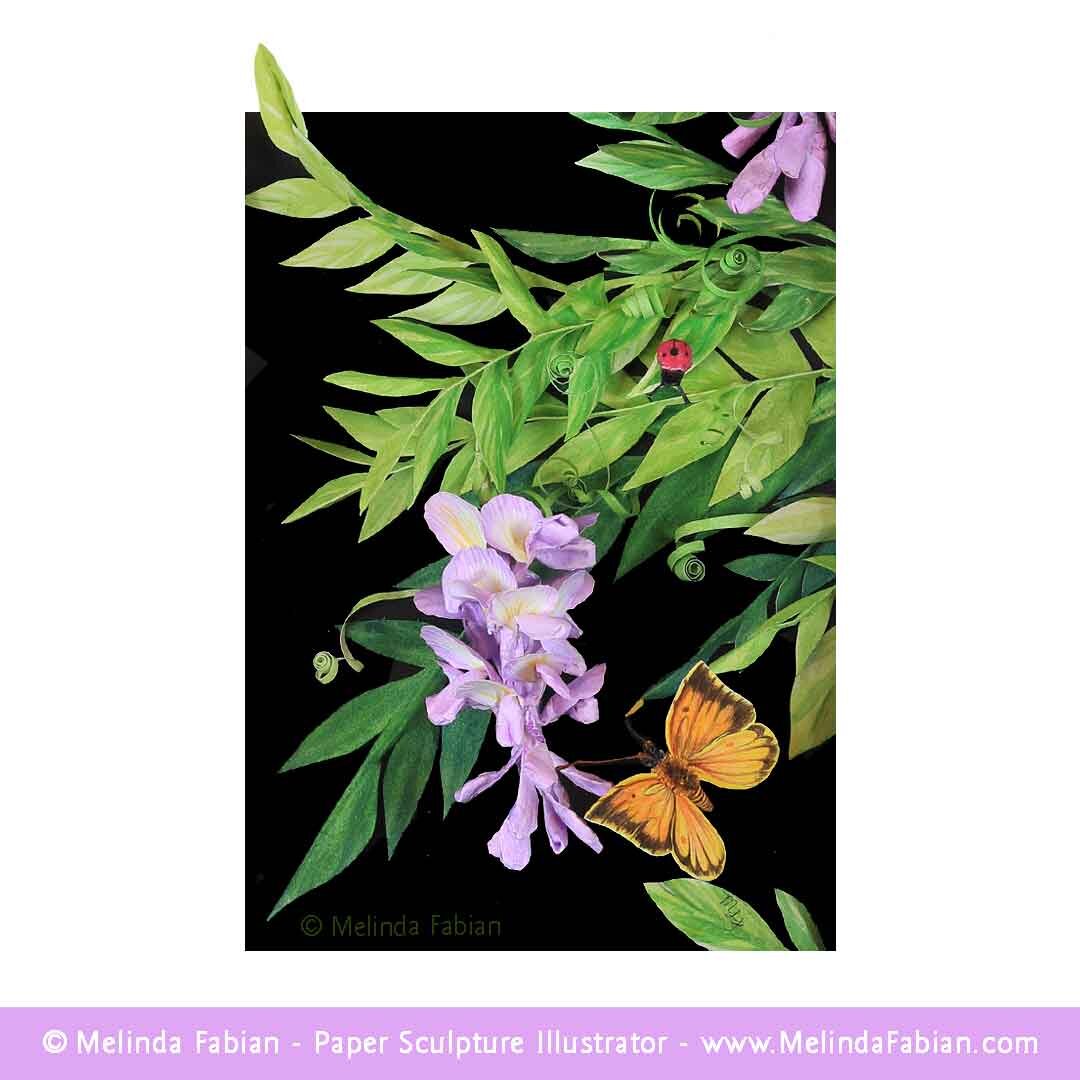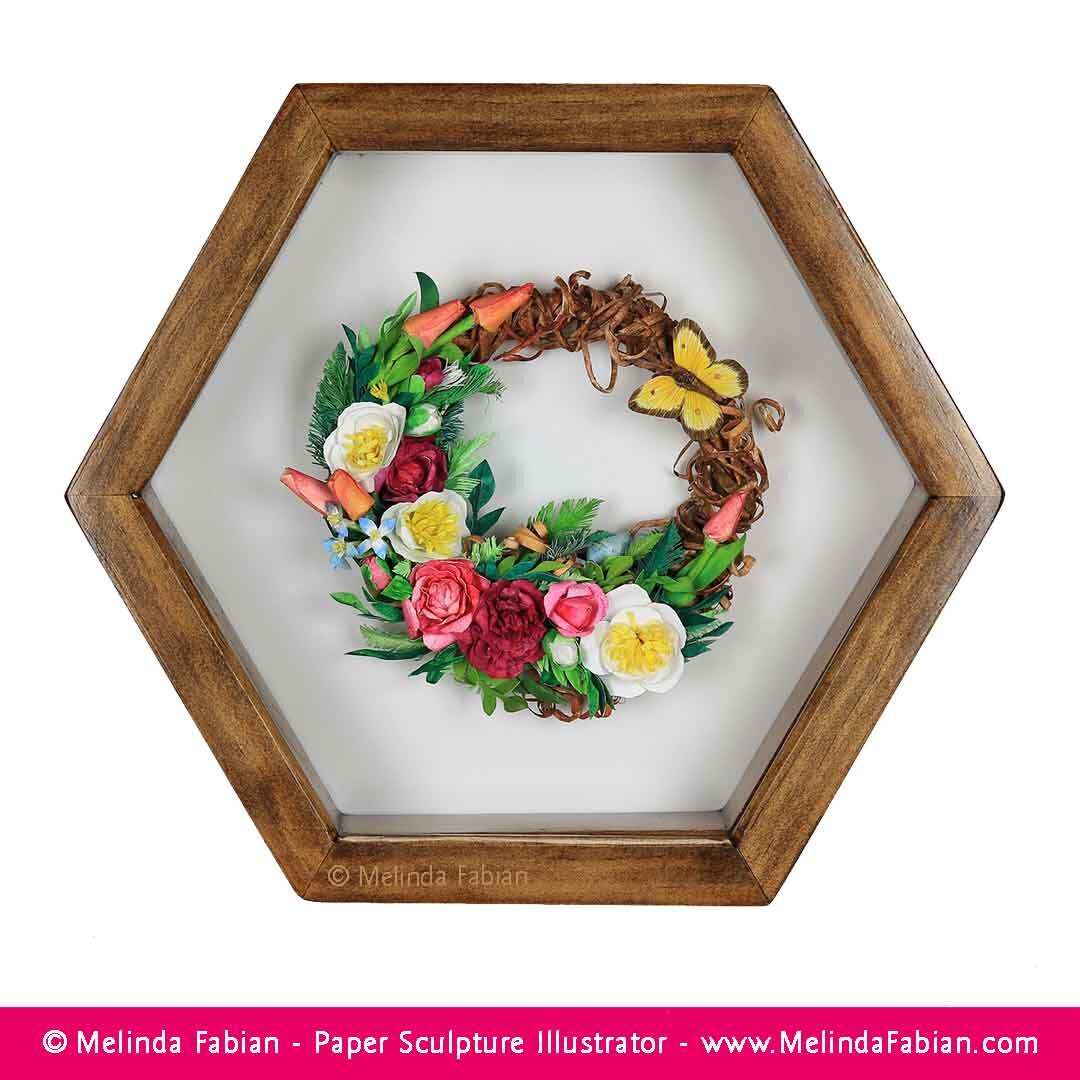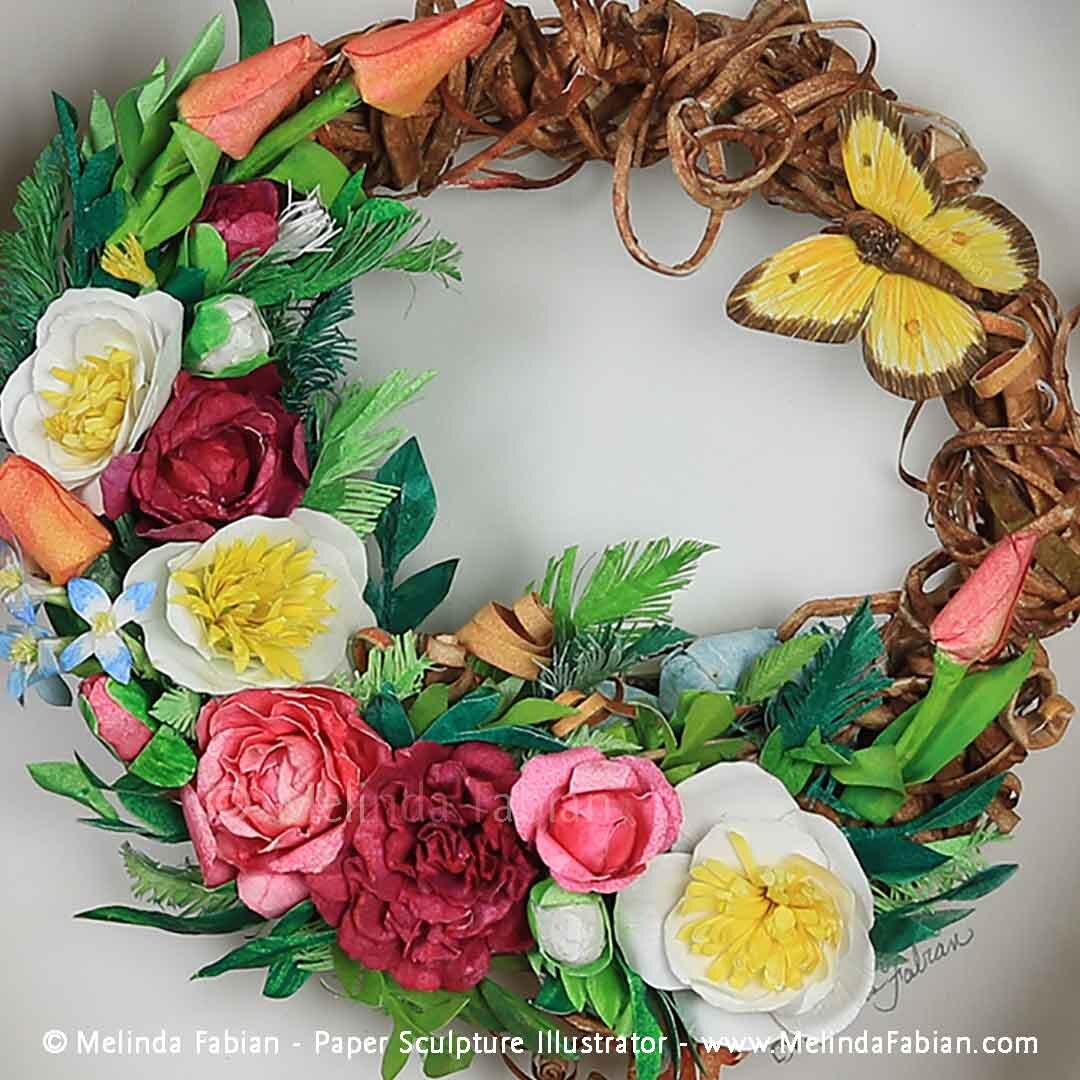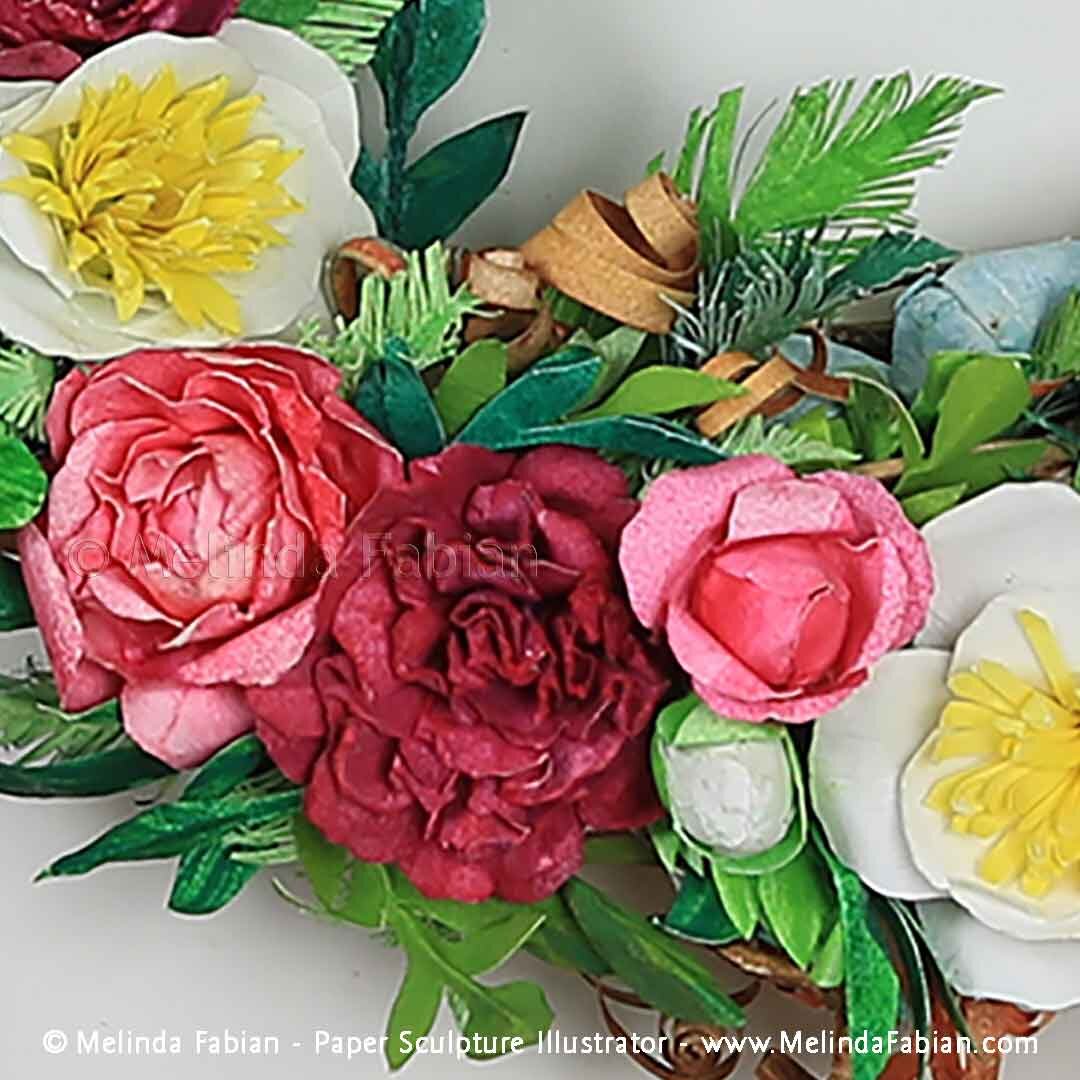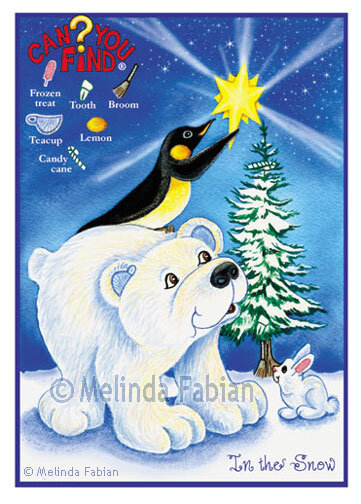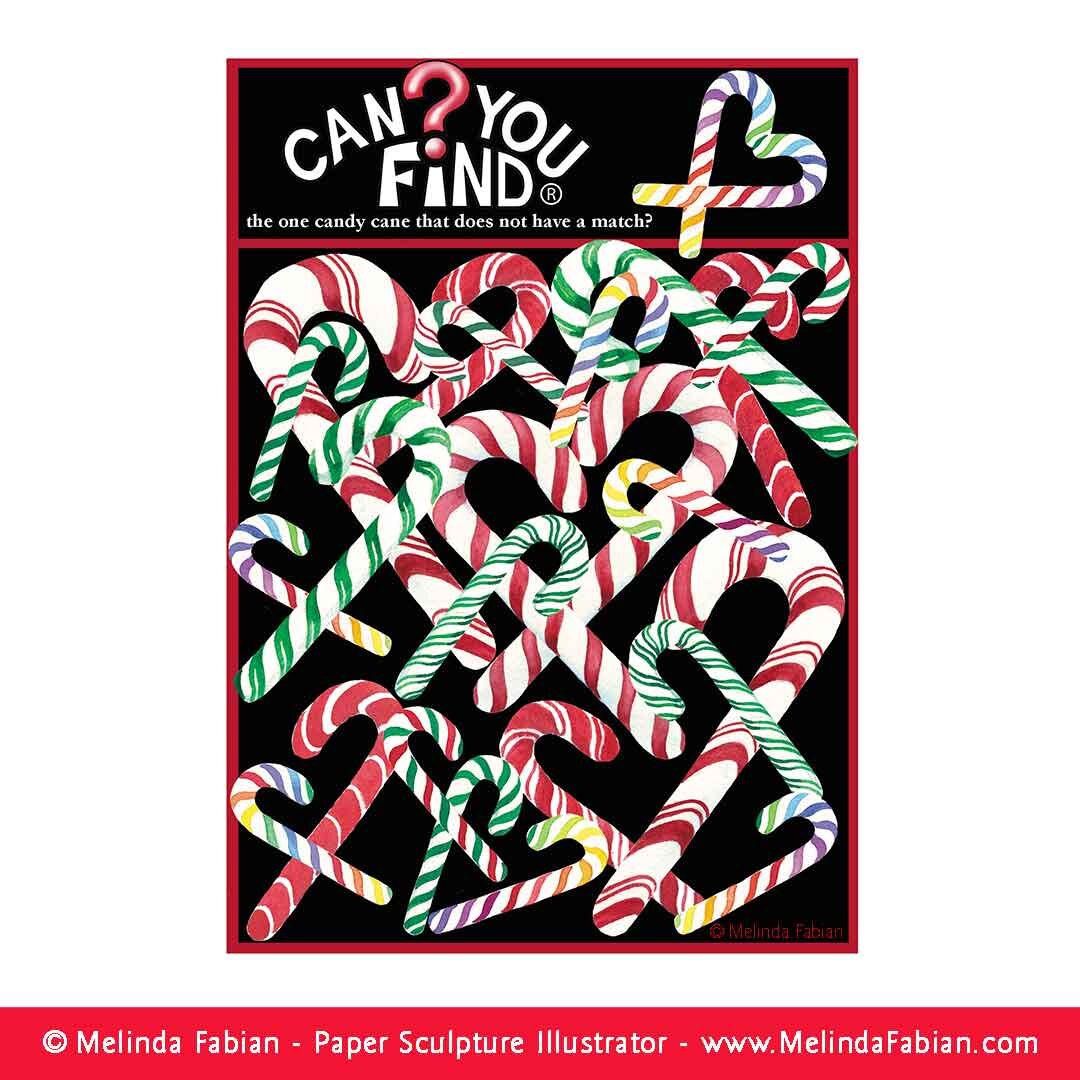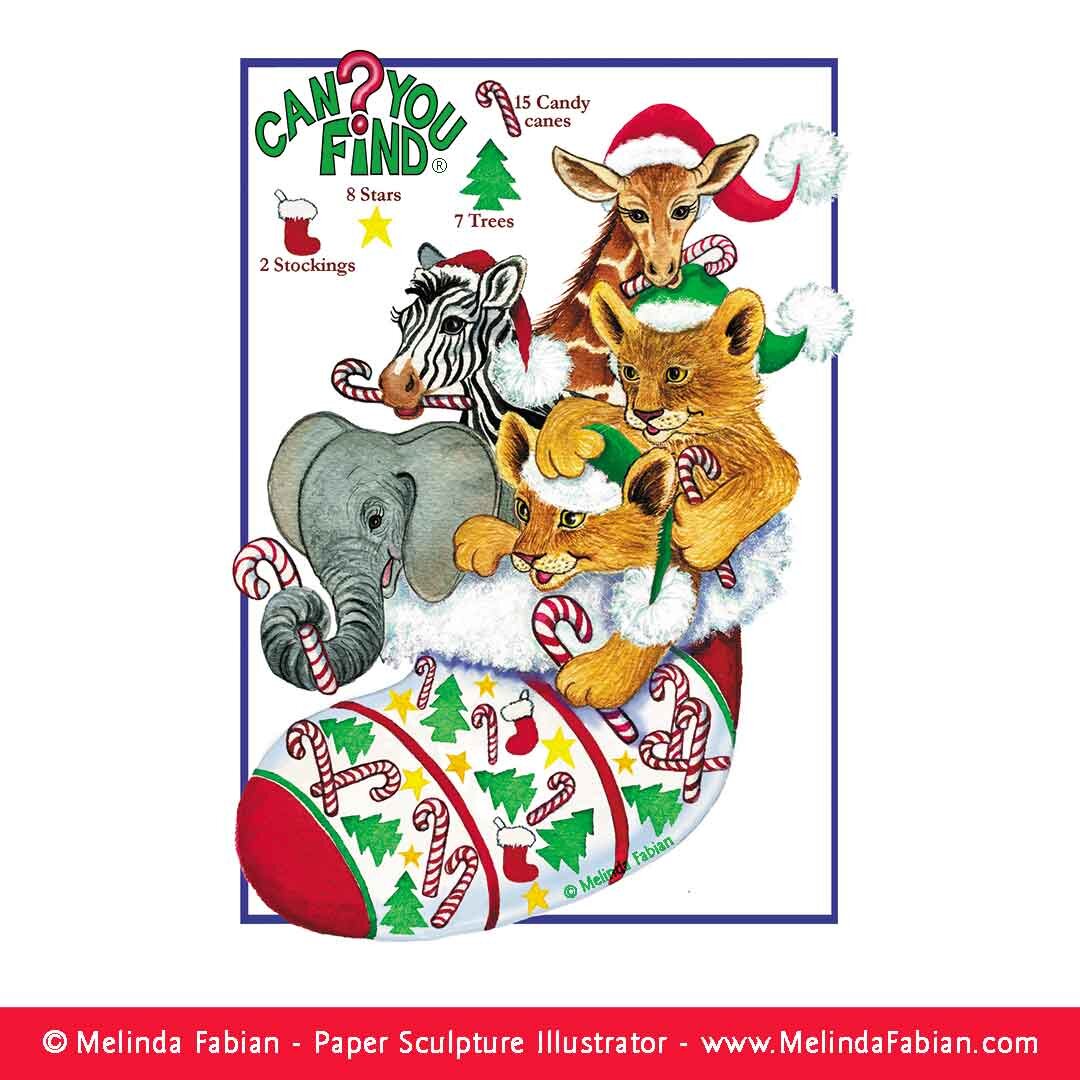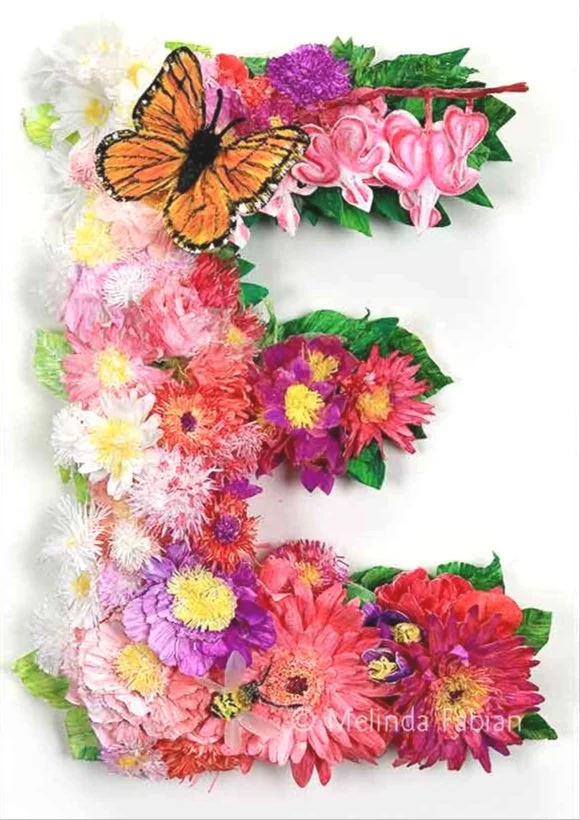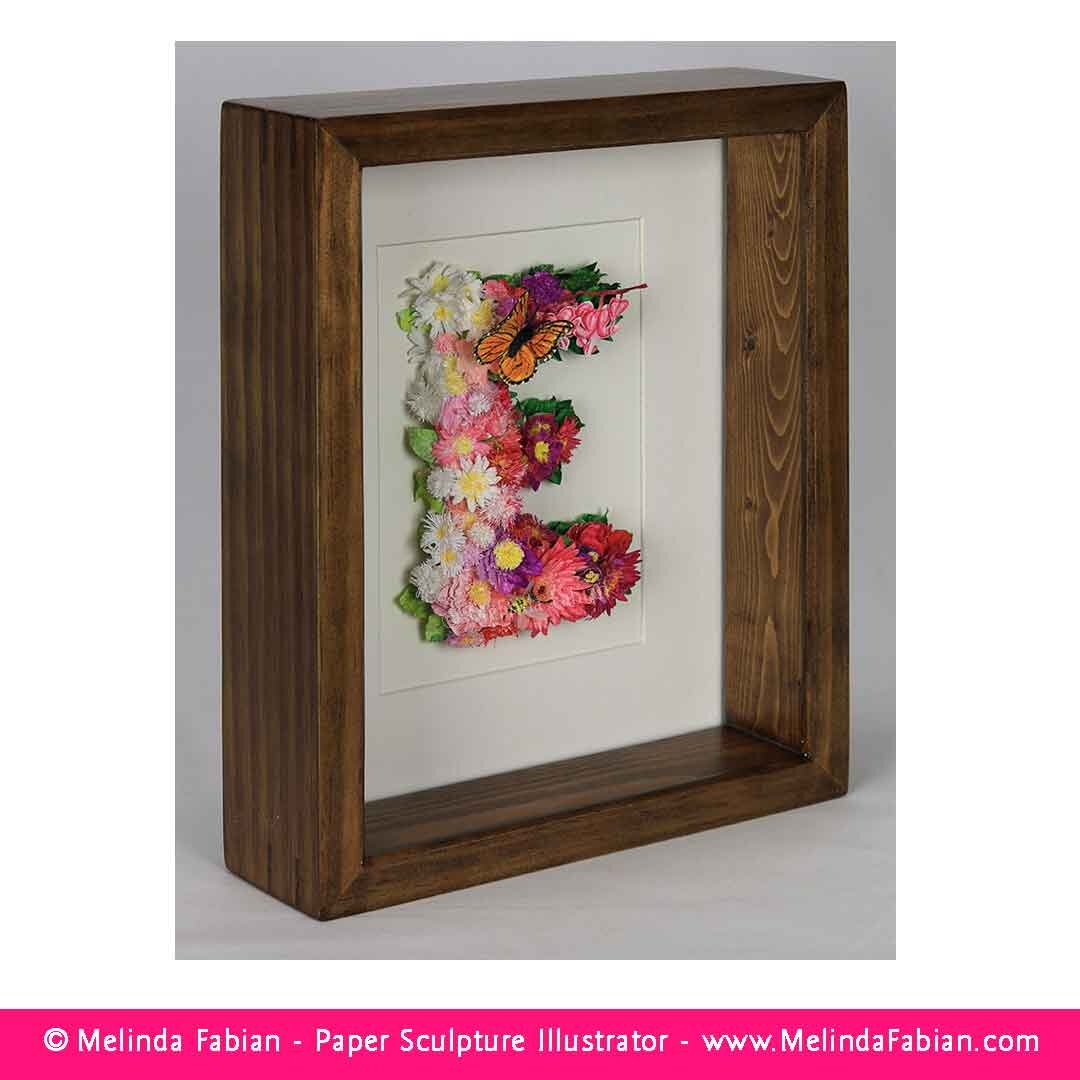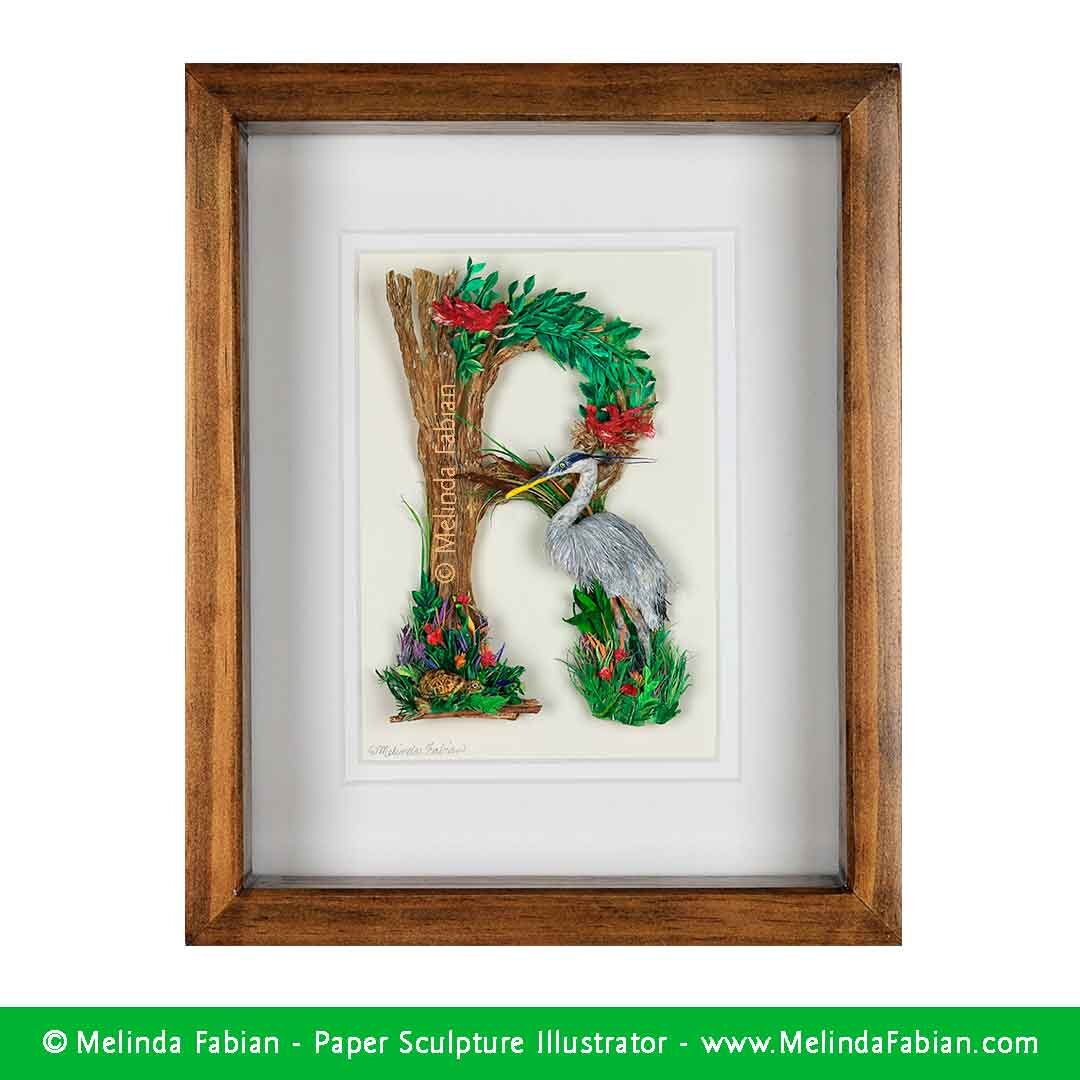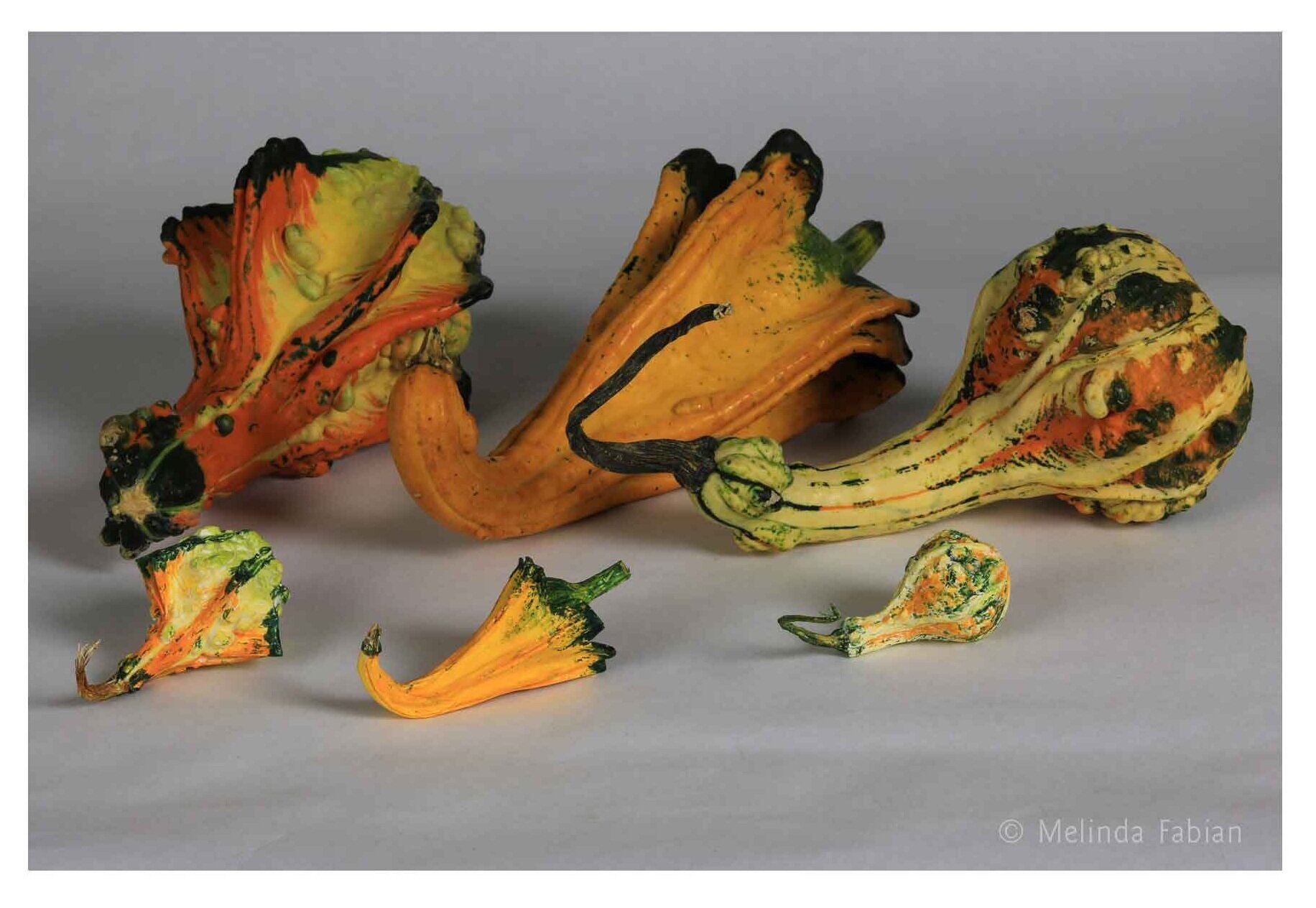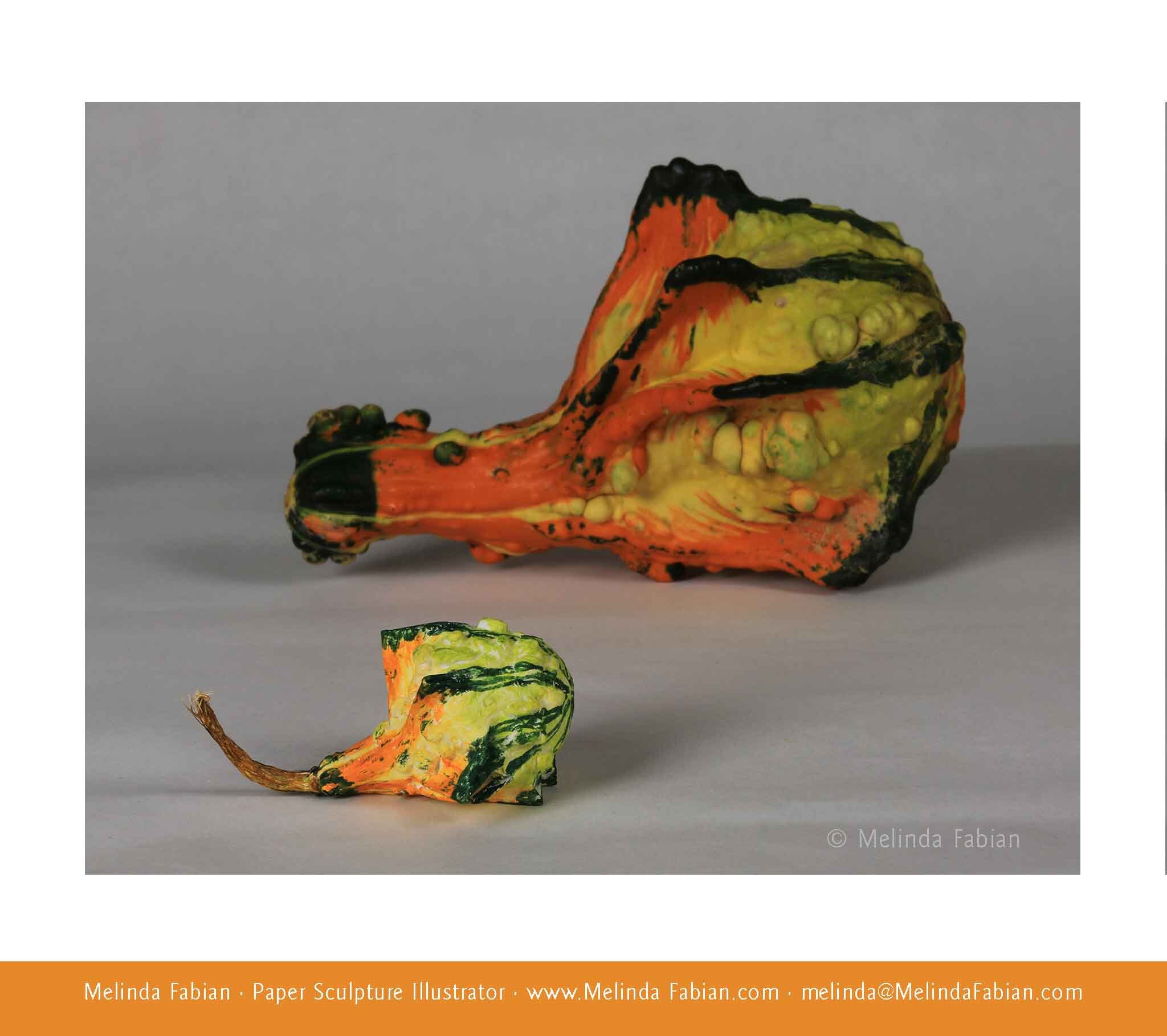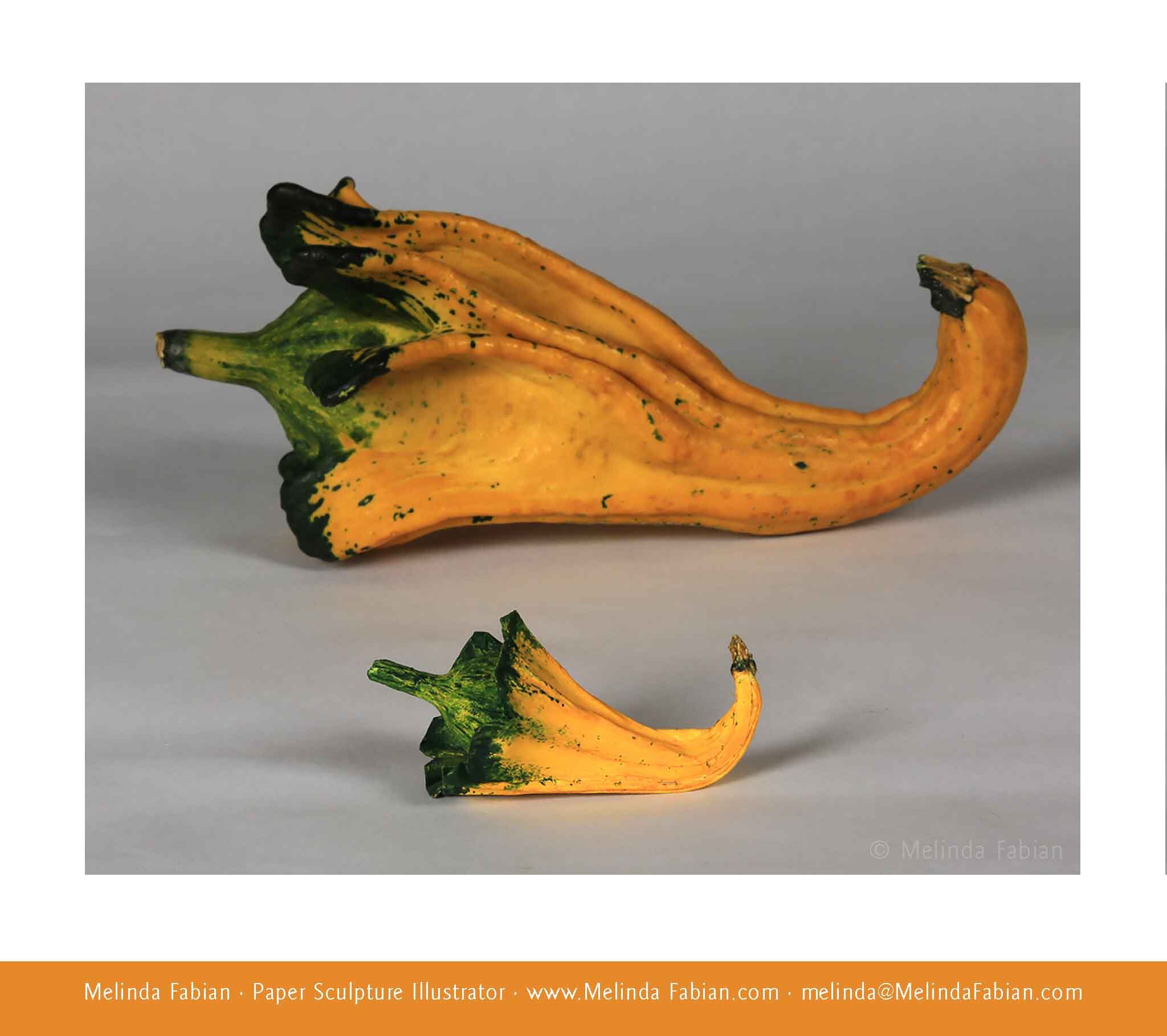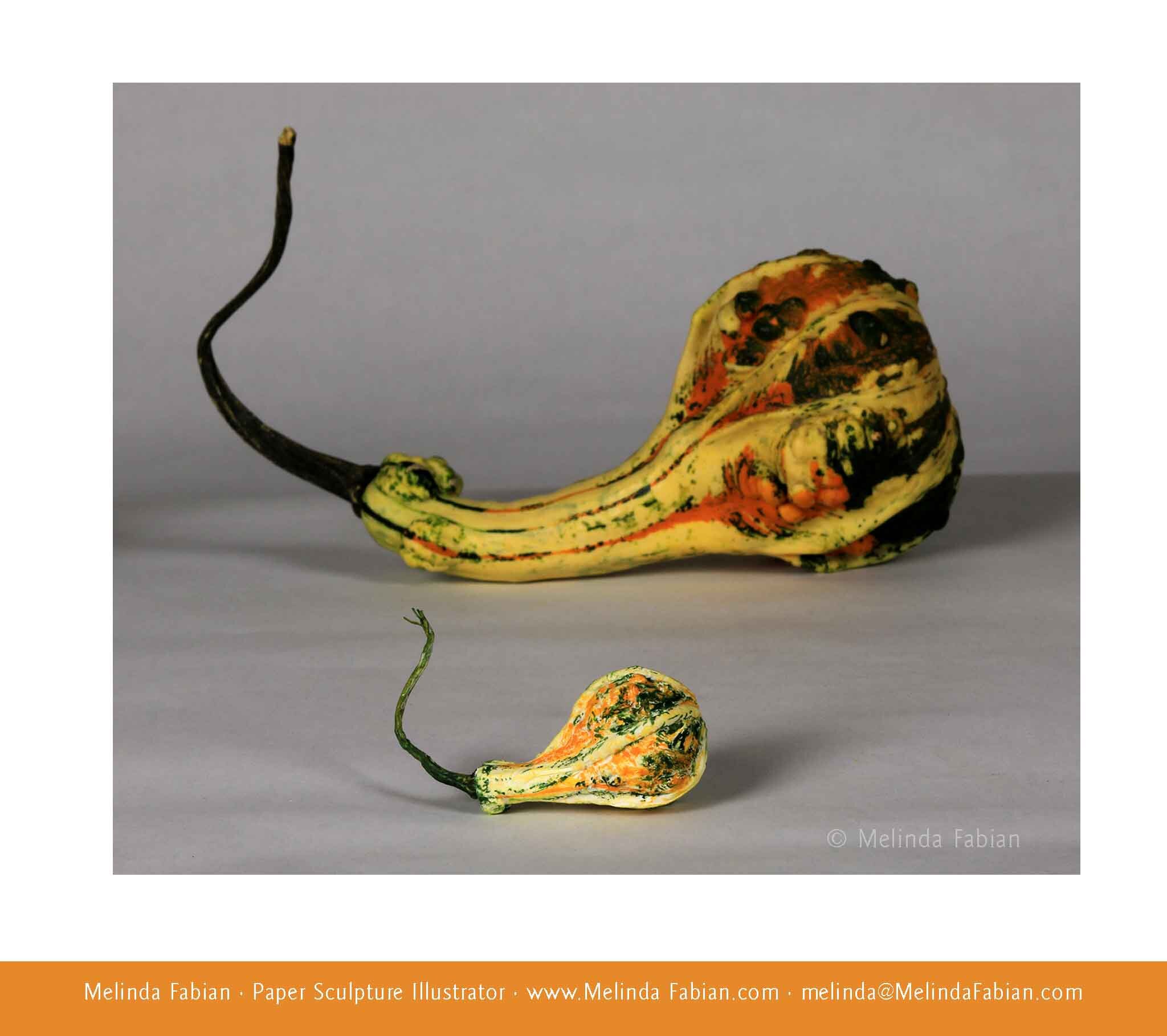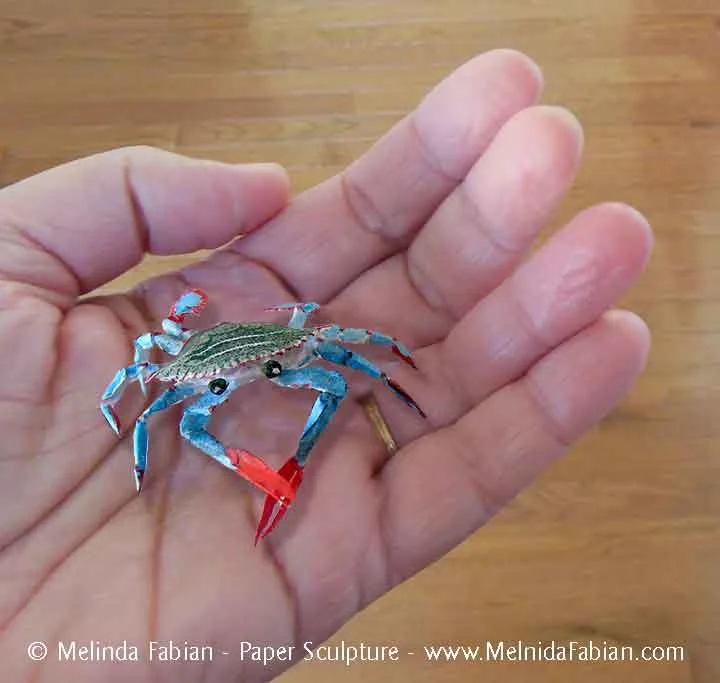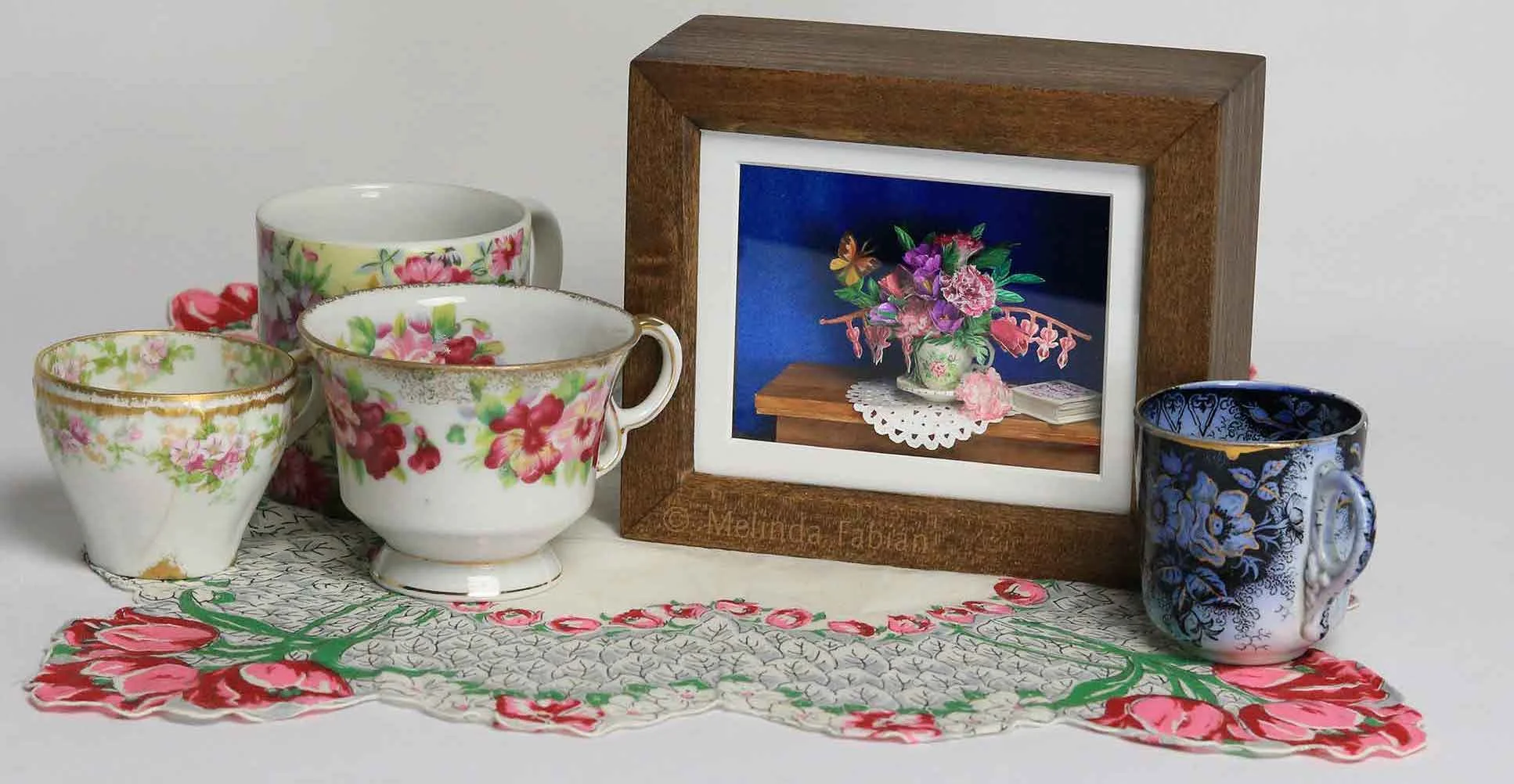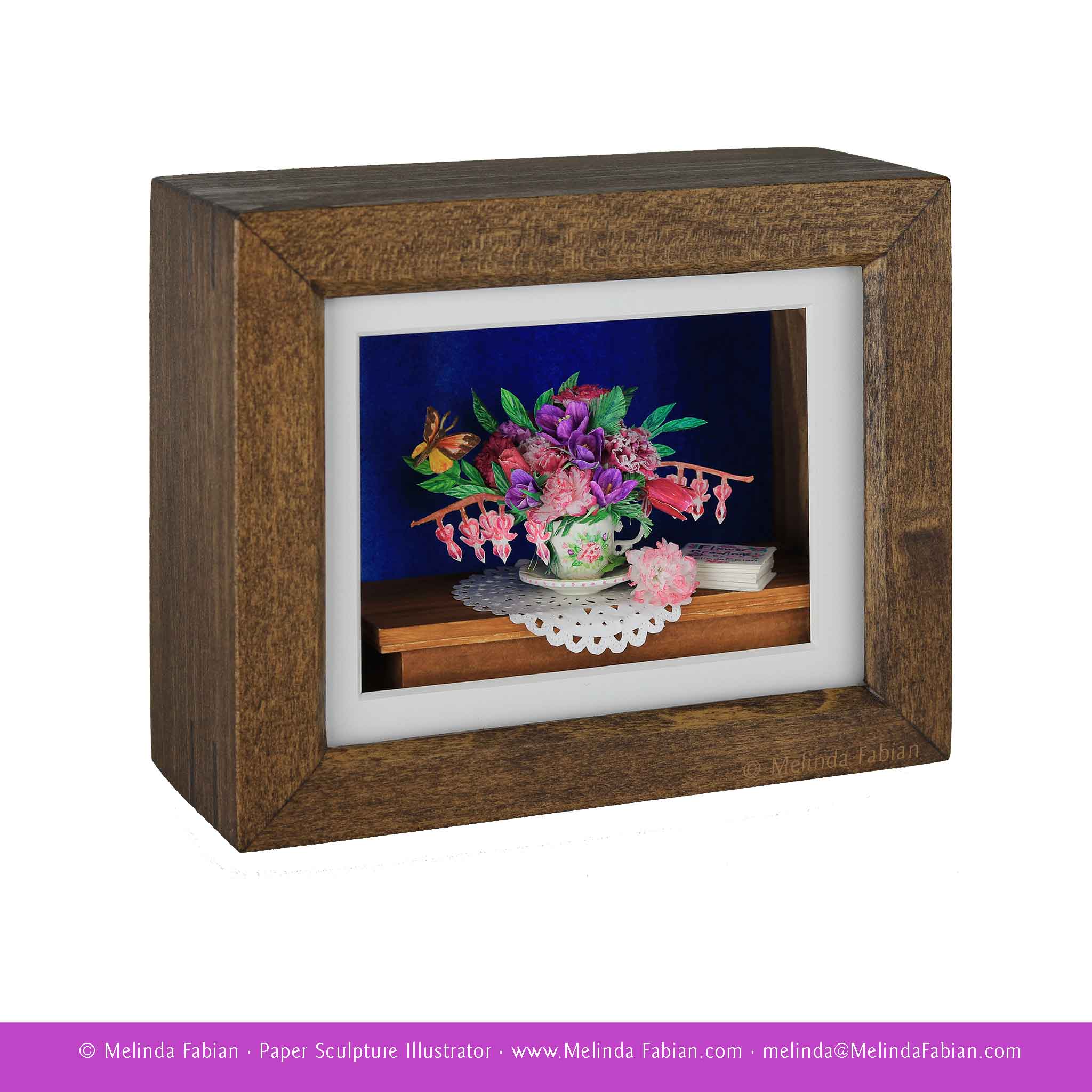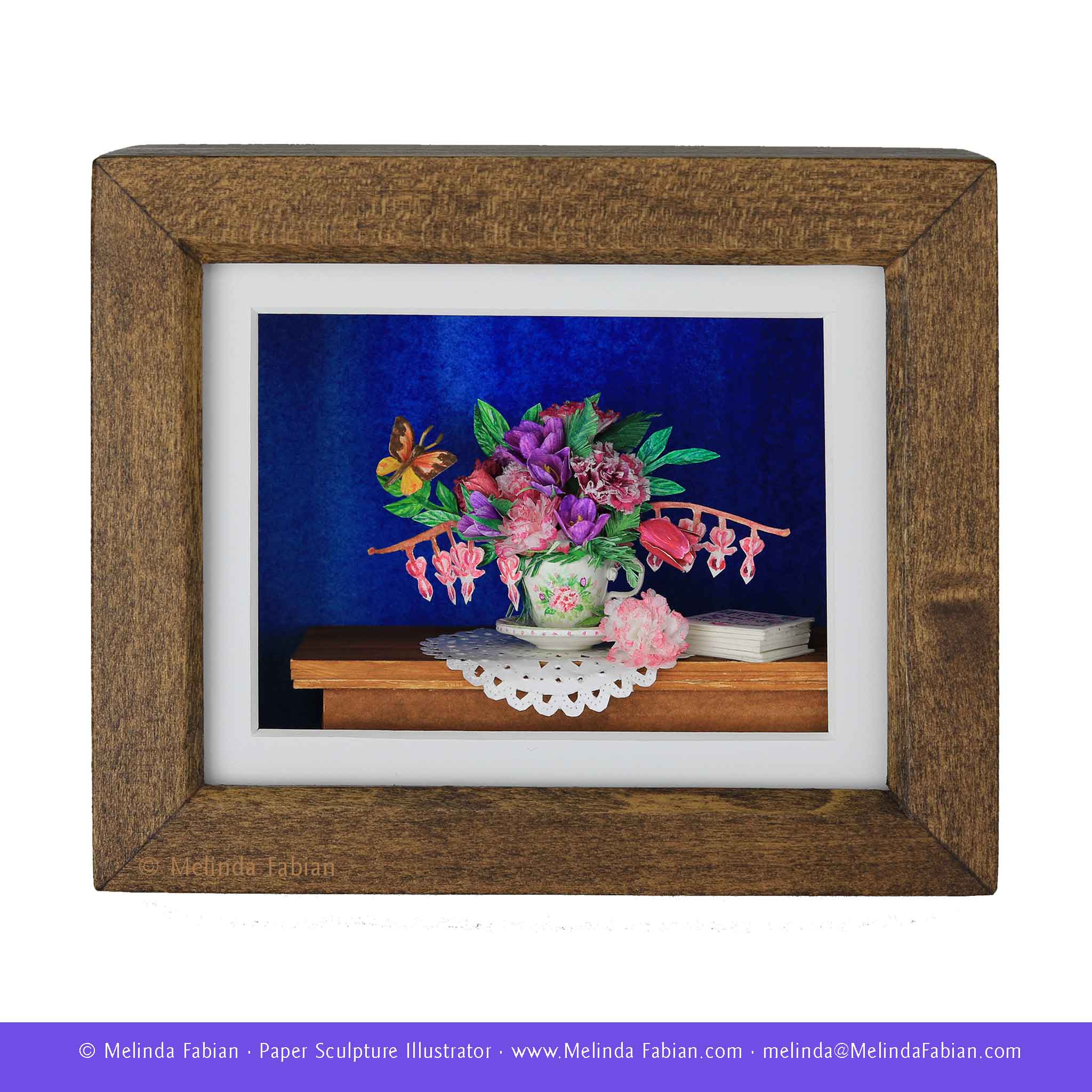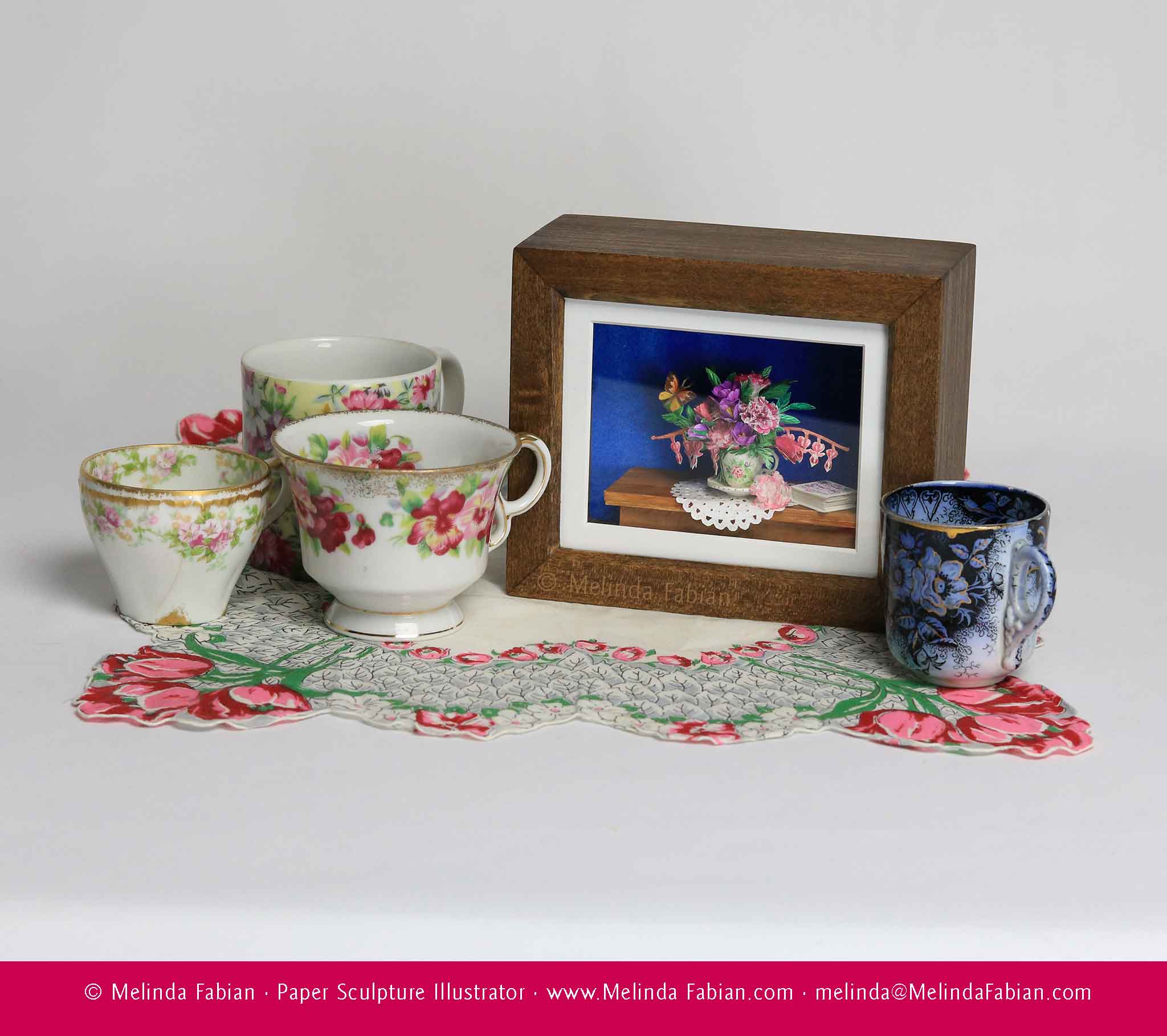Creating a Paper Sculpture 'Wicker' Chair Centerpiece
To bring a chair sketch to life, however, required some construction know-how.
One of the larger pieces I am making for my paper sculpture installation for The Mansion at Strathmore in Bethesda, MD, is a “wicker” chair. I researched wicker furniture extensively — I’ve always liked wicker furniture, so the research was like a shopping spree without the purchasing part.
I ended up with an image in mind of how I want the chair to look when it was finished. I also drew up a bunch of different sketches for my chair, keeping in mind the size constraints of my art installation. I need to keep things in proportion to one another. So, with my sketch in hand, and cardboard I saved for months, I was now ready to start the wicker chair.
I wanted to start with a cardboard base because a thicker paper stock can become a solid and sturdy foundation for furniture. (In my 3D design class in college, we had to make furniture out of cardboard. It was quite surprising with how sturdy layers of cardboard can become.)
Even though this chair is for decorative purposes only in the installation, I still need it to be sturdy because it will be transported to the venue and many people may have to move it around. I can’t have this paper sculpture piece being a hollow, fragile chair that falls apart before the show even begins. Plus, I want to recycle as much as possible, and I can make something beautiful out of old cardboard that would otherwise be discarded.
I started measuring the dimensions of various chairs I have around my house — dining room chairs, desk chairs, antique chairs — to come up with the correct size chair I needed to make. Once that was done, I started to cut out cardboard pieces for for the seat, which are easy and rectangular-shaped. The back of the chair with a slight arch was also easy, no problem.
Next, the chair legs, slats for the back of the chair…but wait….how do I assemble all these cardboard pieces? To bring a chair sketch to life, however, required some construction know-how.
So, I knew building little cardboard models of a variety of chair styles would help me to figure out how to complete the project. I had different objectives in mind with these models, and in the end, these funny little chairs helped me to figure out the changes I needed to make to finish constructing the chair.
What was the overall lesson I learned from all of this? Constructing something 3D often times requires another step of planning. Building a model can help you confront solvable issues quickly and on a small scale. It can be a crucial step and save countless hours when going from a pencil thumbnail sketch to a 3D object. The extra effort can save you time in the end. And now I’m making good progress on chair construction!
Creature Feature: Playful Squirrel Playing on Wisteria Vines
The squirrel is a three-dimensional paper sculpture made completely out of paper.
Wisteria vines wrapped tightly around each other, growing up a tree, around a fence, back down again to the ground, sprouting up a new shoot. Squirrels scampering over the vines. Bumble bees buzzing in the newly opened spring blossoms. A safe haven for new life in spring — butterflies, praying mantis, and tiny ants — all wanting to call the wisteria their home too.
That’s the scene I am working to capture with this squirrel perched on top of a wisteria vine, part of my upcoming art installation, “Charming Victorian Country Garden Retreat,” at The Mansion at the Strathmore in 2020. This squirrel is ready to check out what is happening below. He’s thrilled it is finally spring — and he’s ready for some new adventures.
The squirrel is a three-dimensional paper sculpture made completely out of paper. Even his tail is made out of paper. The tail is actually the easiest part of making squirrels, and it goes the fastest. It takes many, many hours to apply the paper fur to his face and body, however, which is what took the longest.
After the squirrel is shaped out of paper, he is ready for some paint. He is made out of the finest of white papers and painted in watercolor and gouache.
The wisteria flowers and leaves are also three-dimensional and are hand-cut and sculpted to form the shapes I need to create this beautiful squirrel’s spring habitat he and his other friends in the “Charming Victorian Country Garden Retreat” will also call home.
Finding Inspiration in Wisteria Flowers Blowing in the Breeze
Honoring the distant memories I find in these simple yet beautiful flowers adds more meaning and life to my paper sculptures.
Inspiration is all around us…
Gorgeous, light purple wisteria flowers blossoming in spring and early summer. Long, delicate lavender petals with a touch of white, dangling off their stems that grow like braided stalks.
One wisteria plant growing up the tall cherry tree next to the patio, creating a beautiful, peaceful, sweet-smelling sanctuary to relax in.
Another wisteria, standing on its own, growing in the side yard, reaching out and bending and twisting its vines growing in every direction, creating a picturesque backdrop for a photo shoot on a warm spring day.
Planting my favorite new wisteria at the base of the wood fence along the stream, paving the walkway with a beautiful view of lavender blossoms from the kitchen door, lining the path as you walk up to greet me at my home.
Memories often lead to the inspiration for many works of art. I know this is true about my own work. I find this is especially true with flowers. Creating an enriched, enchanted, idyllic scene like the ones I described above help me capture movement and beauty in every day moments.
Bringing those imagined memories to “life” with paper will never of course beat the beauty of mother nature, but honoring the distant memories I find in these simple yet beautiful flowers adds more meaning and life to my paper sculptures. Wisteria flowers just happen to be one of my favorites.
These wisteria flowers, crafted from paper and paint, will feature prominently in my upcoming art installation, “Charming Victorian Country Garden Retreat,” at The Mansion at Strathmore in 2020.
Welcome Home With a Beautiful Grapevine Wreath
I created this paper sculpture “grapevine” wreath using only paper and paint.
I was thinking about the different type of welcoming signs that people use around their homes. Perhaps it is a welcome mat on a doorstep or a decorative flag hanging near their house that says, “Welcome Friends.” But, one of the things I think is most common is a wreath that hangs on the door.
So many homes have wreaths — floral wreaths, themed wreaths, a different wreath for the different holidays — wreaths made out of all sorts of materials like grapevines, wood, spring flowers, summer flowers, mums for the fall, gourds, pumpkins. All signs signaling, “Welcome to Our Home.”
Thinking about wreaths also reminded me of the time my mom had a grapevine wreath with flowers on it hanging on her outside porch wall. A little bird decided to make a nest on the wreath. You could stand inside her kitchen and watch from the window as mama bird built her nest. After the eggs hatched, mama bird would make many trips throughout the day to feed her little ones. Soon the little ones were old enough to fly on their own and make a new home of their own.
I used to have a beautiful large grapevine wreath like that on the side of my house for years. It was gorgeous, with large cranberry and white mums. A little “nest” filled with plastic eggs completed the wreath.
Keeping both of those wreaths in mind, I created this paper sculpture “grapevine” wreath using only paper and paint. Peach-colored tulips, pink, red, and white peonies, leaves and ferns decorate the wreath. There is even a little nest of light blue eggs. A pretty yellow butterfly stops by for a visit.
Here’s a close-up and some photos of the finished wreath, which is framed inside a custom, hexagon wood frame.
Melinda Fabian Set as Featured Artist at Strathmore Paper Works Show
BIG news! I will be the featured artist at the upcoming Paper Works art show at The Mansion at Strathmore this summer, where I will exhibit an 18-foot paper sculpture titled, “Charming Victorian Country Garden Retreat.”
BIG news! I will be the featured artist at the upcoming Paper Works art show at The Mansion at Strathmore this fall, where I will exhibit an 18-foot paper sculpture titled, “Charming Victorian Country Garden Retreat.”
Created out of paper and paint, it is my hope this full-scale paper sculpture experience will remind us of the importance of creating real spaces in our lives that can be our safe haven — places that are meaningful, relaxing, rejuvenating and enjoyable. Here are just some of the surprises you can expect to find in this “Charming Victorian Country Garden Retreat”:
Visitors are welcomed into the serene retreat with beautiful garden, framed by exquisite, life-like hanging purple wisteria flowers while squirrels scamper over the vines. Tulips, peonies and iris flowers line the front porch of a Victorian country home, providing a retreat for birds and butterflies too. The wicker table and chair on the front porch overlook the rose gardens while the family dog and kittens play nearby.
You can also count the ladybugs and look for hidden creatures, such as a chipmunk, praying mantis, bees and a leaf hopper. This paper habitat can just about come alive with just a little imagination. Close your eyes for a moment and you can almost smell the flowers, hear the birds chirping and feel the sunshine on your face. By the time you’ve had a good look around, I hope you’ll realize just how life-like paper sculpture can be.
I've already been hard at work for months bringing to life a realistic paper sculpture like you've never seen before, and I can't wait for you to see the completed piece. In the meantime, you can follow the journey on my blog and social media accounts and subscribe to my newsletter to be the first to get new updates!
The show will run at The Mansion at Strathmore in Bethesda, Maryland, from Sept. 8 through Oct. 30, 2020. More details to be announced soon!
Updated Aug. 5, 2020.
Can You Find? Fun for the Holidays
Can You Find? all the objects hidden in these three holiday-themed illustrations?
In the past 30-plus years of my illustration career, some of my favorite projects to work on are hidden object puzzles. I illustrated these games for Nature Friend Magazine for years before creating a line of Can You Find® hidden object greeting cards. Featuring full-color illustrations of everything from a green frog hanging in a tree to a barnyard celebration, I was always asking my family what else I could hide in these fun illustrations.
My Can You Find? greeting cards earned two awards — a Dr. Toy Award and a Creative Child Magazine Seal of Excellence in 2006. They became the featured illustrations for other family-friendly, playful products such as jigsaw puzzles. I have also illustrated a series of hidden object books, called “Invisibles” for Carlisle Press.
My love of playful artwork with an element of surprise is something I have carried with me into my paper sculpture designs as well. I always want to add a touch of humor or an unexpected visitor — like a ladybug passing through — to give those who look carefully a fun surprise to discover.
All this said, because I always associate the holidays with family, I am reminded of all the hidden object puzzles I have done over the years. They’ve given my own family so much joy and laughter, and I want to share that with all of you, too. So, Can You Find? all the objects hidden in these three holiday-themed illustrations?
Paper Sculpting 'Dancing' Bleeding Hearts
One of my favorite flowers that you will see in many of my pieces are bleeding hearts.
One of my favorite flowers that you will see in many of my pieces are bleeding hearts. I have many reference photos of these beautiful pink heart-shaped flowers. Every spring when they start to bloom, I feel compelled to snap more photos of the beautiful, pink, bleeding hearts.
Because of the natural way these plants grow and the way the stem gently bends in an arc shape, makes it easy to use the flowers in a variety of compositions.
In my paper sculpture design “Crossing My Hearts,” I wanted the illustration to be a flat 2D painting and then have the flowers flow gently out of the paper into a three-dimensional painting. When you first look at the picture, it appears to be a two-dimensional piece, but then are surprised when you realize that the flowers are coming out of the background into the foreground.
I wanted to add a touch of humor to this piece, so I added the ants to look as though they are marching along, one after another, like ants do, all along the stem of the flower. Maybe they are getting ready to dance and do the mamba.
Creating Custom Paper Sculpture Letters as One-of-a-Kind Keepsakes
When I was designing the letters, I intentionally made them so that each one could be used individually, framed and sold separately to display on a shelf or to hang on a wall.
This Letter ‘E’ and the letter ‘R’ were both originally designed as a part of my logo that spells out the word “PAPER.”
But, when I was designing the letters, I intentionally made them so that each one could be used individually, framed and sold separately to display on a shelf or to hang on a wall.
The letter ‘E’ is made up of a colorful array of flowers with a butterfly and a little bee on it. It is a beautiful way to highlight one of your initials. To make up this Letter ‘E,’ I individually cut by hand each little flower.
After the flower is cut out, I then paint it in watercolor and gouache. This letter ‘E’ contains over 50 hand-cut and hand-painted flowers. Each petal is individually cut by hand, glued together to form the flower and then painted. The butterfly is “flying” just above the flowers, looking like it is about to land. The little bee in the bottom left hand corner is very busy checking out the gorgeous pink gerbera daisy.
For the letter ‘R,’ I wanted to highlight a bird in honor of a close friend of mine who enjoys taking bird photos. No matter where he goes he manages to find a bird to photograph — even when no one else can even see any wildlife in the vicinity, he will find one!
For this letter, I chose a blue heron, since they are also a very popular bird in my home state of Maryland. Here is just one of my friend’s many reference photos he generously let me use to make this tall, statuesque bird.
This letter ‘R’ was a little trickier to make than the flowery letter ‘E.’ Flowers can pretty easily transform into any of the letters of the alphabet. On the other hand, the blue heron and the tree shape had to conform to the shape of the letter ‘R.’ I added a couple of other birds in the tree and a cute little box turtle is sitting at the base of the tree on the left-hand side.
This three-dimensional letter is all made out of paper. I included a behind-the-scenes photo of the hand-drawn letters and you can also see the blue heron, all in white, before he got painted in watercolor and gouache.
Both letters are framed inside a custom wood shadowbox frame. The frame measures 10.75” L x 9” W x 2.5” D. Please contact Melinda Fabian if you would like to purchase either of the framed letters.
You can also custom order a personalized letter, which can include items that are important to you or your loved one, if you’d like to give it as a gift. Send me an email at melinda@MelindaFabian.com to discuss your custom letter initial.
Creature Feature: A Squirrel 'On My Soapbox'
This realistic, wooded habitat is made entirely out of painted paper — even the squirrel is made out of paper.
Like many people, we have lots of squirrels scampering around our yard. They are fun to watch, although I must admit I don’t care for it when they eat all the bird seed out of our bird feeder. I am fine if they eat it off of the ground though.
In my paper sculpture design, “On My Soapbox,” I wanted to create a habitat for this furry little squirrel where he would look right at home. I imagined he is living in a wooded forest area that has maple trees and oak trees in it. I included some fallen maple leaves and oak leaves laying on the ground. It is the start of the autumn season so the leaves are showing a tinge of orange. The squirrel is holding one of the acorns that fell on the ground. I am sure he is going to hide that acorn so he can look for it later on. This realistic, wooded habitat is made entirely out of painted paper — even the squirrel is made out of paper.
The idea of fallen acorns remind me of a house I once lived at that had large tall oak trees on my property and all around my neighborhood. The one year, there was such a bumper crop of acorns on the trees that as the leaves began to fall in autumn, so did the acorns! Between the squirrels running across the roof of the house and all those acorns falling off the branches of the oak trees, it made so much noise, you would have thought that maybe there was a burglar on the roof!
But, not to worry, this squirrel in “On My Soapbox” is not up to any mischief. He is collecting acorns and trying to decide where to hide them all before the winter sets in.
Turning a Cat Nap Into a Work of Art
When you see a sweet little cat nap, don’t you wish it could be you, sleeping peacefully at 2 in the afternoon?
When you see a sweet little cat nap, don’t you wish it could be you, sleeping peacefully at 2 in the afternoon? Life of a house cat. The only thing he has to worry about is, “When can I take another nap?” and “When is supper time?”
Those were a few of the things I was thinking about when I was painting this orange tabby cat sleeping peacefully in his favorite, blue-stuffed chair, not a care in the world!
This sleepy tabby is a flat, two-dimensional watercolor and gouache painting with a few three-dimensional elements added to the picture. His furry ear is popping out of the paper, and his whiskers and a few bits of fur here and there gives him some added 3D effect.
Identifying an Artist's Signature Style: 'Bunny and Butterflies in My Garden'
When you look at an artists’ work, you can often get a sense of not only their style, but also their color palette, the subjects they enjoy painting…
When you look at an artists’ work, you can often get a sense of not only their style, but also their color palette, the subjects they enjoy painting – such as landscape painters, floral artists, animals, etc. You may also notice similar items in many of their paintings. If you look through my art and illustration work that I’ve done over the past 35 years, including my published illustration books and editorial work, you will also notice a trend.
Like many artists, I tend to paint and illustrate things that I am familiar with and that are of interest to me. My work is almost always nature-related and is very colorful. An example of some of my favorite things to illustrate can be found by looking at the paper sculpture illustration, “Bunny in My Garden.“
The first thing you may notice about this 3D paper sculpture illustration is that it is quite colorful. It is a good example of my color palette, which includes pinks, purples, magentas, coral and blues. The next thing you probably will notice is the bunny rabbit.
Instead of painting a typical brown wild bunny, I wanted to depict one of the pet rabbits my daughter had when she was growing up. It is no coincidence that this bunny is sitting in the flower garden. You may think this is where she would run off to when not in her hutch, but that is not it at all. I will often include a little secret or a hidden play on words in my paintings (that only my family members would catch onto) and this is actually a small play on words.
Our family bunny never ran into the flower garden. The bunny’s name was Flower. So of course she needs to sit among these beautiful colorful flowers. (Although I must admit I had imagined that if she did get into the flowers, she would have eaten them all.) The other thing about Flower is that she was the cutest little dwarf bunny rabbit — soft bright white with dark black spots — just like in the illustration.
At the top of the oval picture are one of my favorite flowers, the bleeding hearts. I really like the shape of the flower and the plant and I like drawing them and paper sculpting them as well. The pink heart-shaped flowers curve nicely on the stem, which I can use to my advantage to help to create a frame around the subject, as I did in this painting. I used the curved flower stem to bring your eye back to the cute little bunny rabbit.
I’ve also loved seeing and watching butterflies since I was a little girl and have many reference books, photographs and books about butterflies. This spring I even had the opportunity to visit the butterfly pavilion in Los Angeles at the Natural History Museum. I will often include butterflies in my work and the ones in this picture are three dimensional and pop out of the paper instead of being just a flat painting.
The last thing I want to point out about this “Bunny and Butterflies in My Garden” design is that if you look closely, you will notice a little ant “hiding” in the leaves of the flower garden. I’ve drawn hundreds of hidden object pictures over the years and will often have little things hiding out in the background of my work, waiting to be found.
If you have the time, I hope you will take a look through my portfolio to see if you can notice any other similarities in my work. Can you find other illustrations with bleeding hearts, bunny rabbits, ants and flowers? I hope I have also encouraged you to look through other artists portfolios and gallery work to see if you can discover their color palette and the similarities they may have in their work.
Celebrating Fall With a Trio of Paper-Sculpted Gourds
This trio of gourds was a fun project to do. I wanted them to look as realistic as possible.
Sometimes I like the challenge of creating something as realistically as I possibly can out of paper. While visiting a local farm, I discovered so many interesting gourds in all different sizes and shapes. Of course I thought — that’s it! A great idea for a photo-realistic paper sculpture.
After purchasing many different varieties of gourds in all different shapes, sizes and colors, I had to narrow it down and decide which one I would try to mimic out of paper and paint. These are the three gourds I chose. I also decided to make them quite a bit smaller than the real-life gourds.
My favorite part of this design was adding the texture to the gourds — all those knobby lumps and bumps. I then painted the gourd after it was all shaped and formed to mimic the color of the ones I bought at the farm.
The paper sculpture that was the most challenging to make was the smoothest-looking gourd of the three. That surprised me as I thought it would be a breeze to make that one: Just glue down some paper, add some paint and it is done. But for some reason, it took some trial and error and many re-dos to get the smooth surface of the gourd correct. It kept getting lumpy and the seam where the two ends of the paper met kept showing up in an obvious way in all the wrong places. The trick is to hide your seams when you paper sculpt so that is doesn’t give your “secret” away that it is just made out of paper.
This trio of gourds was a fun project to do and I especially like hearing people be so surprised to discover they are paper gourds and not real gourds. The photos show the real gourd next to the paper gourds, which are completely three-dimensional and made entirely out of paper that I painted to give them a realistic look.
Making a 3D Coral Seascape Come to Life With Paper
I like creating 3D under-the-sea paper sculptures because I can add a lot of different textures and vibrant colors to the scene.
I like creating 3D under-the-sea paper sculptures because I can add a lot of different textures and vibrant colors to the scene, such as my design, “Coral Reef.” I also like making the sand out of paper – keeping the entire paper sculpture authentic –100% made out of paper.
For this colorful “Coral Reef” paper sculpture, I wanted to highlight the crab and the clown fish. I also wanted to intermix flat papers with three-dimensional pieces. For instance, the magenta and light purple coral on both sides of the illustration are 3D in that they come out of the flat papered background, but, the coral is made with flat paper.
In contrast, if you look closely at the 3D paper seashell (bottom left corner) and the paper crab, they are both a completely three-dimensional object that you can hold in your hand, prior to me attaching it to my “Coral Reef” illustration. Both the crab and the seashell are not a flat piece of paper but life-like mini versions of the real thing.
Another example is the fish. The yellow fish in the middle of the “Coral Reef'“ illustration are three-dimensional — coming out of the paper, not attached to the flat background — but the fish is painted on flat paper.
In contrast to the yellow fish are the completely 3D clown fish. Each one of the orange, black and white clown fish come out of the paper as individual components of the design. Their bodies are about one-quarter of an inch in width.
Can you tell if the blue fish in the background are completely three-dimensional or if they are made using a flat piece of paper?
Using a combination of flat papers and completely three-dimensional objects creates another element of dimension, texture, variation and interest to this colorful paper-sculpted “Coral Reef.” Plus, it was so much fun to create. I look forward to making another one in the future.
The original “Coral Reef” piece has already sold, but you can purchase a notebook with the coral reef art printed on the front cover in my shop on my website here. The coral reef art is also available on a mouse pad in my shop.
Why Norman Rockwell Is a Major Influence on My Artwork Goals
Norman Rockwell is just one of many illustrators that has influenced the type of art that I want to create.
One of the many things that I like about Norman Rockwell’s work is the subject matter. He depicted images of children playing — happy, pleasant scenes that often used humor within the illustrations to create images of an idyllic childhood.
Even though these scenes were most likely not what most people experienced growing up, it was certainly what people wished it was like or hoped it could be like. His illustrations make me feel happy and I imagine that his illustrations brought happiness to many people, even if only for a few minutes.
Of course I also like the character he was able to bring out in his models and the expressions on their faces. He was a master illustrator and had the ability to bring life into the characters he painted in his artwork.
Influenced by Norman Rockwell, I hope to be able to bring joy to people when they are viewing my art. My hope is that it will make them feel happy and hopefully make them smile. I like when someone looks at my paper sculptures and wonders, “How did she make that?” It creates a sense of fun.
Whether I am working on another Can You Find? hidden object puzzle or another paper sculpture illustration, one of my goals for my art is to make people happy and to create art that even your grandmother can view. Norman Rockwell is just one of many illustrators that has influenced the type of art that I want to create.
Lizard 'On the Rocks': Finding Inspiration In Unexpected Places
My travels out west is where I got the inspiration for this little lizard.
Inspiration can be everywhere. From everyday life to other artists’ works, to your travels. My travels out west is where I got the inspiration for this little lizard.
After visiting some of the western states, including California, Nevada, Arizona, and Zion National Park and Bryce Canyon National Park in Utah, and seeing a completely different type of scenary. Much of the landscape I had seen on that trip out west was so different from anything I had ever seen before. I was compelled to create a new paper sculpture depicting something from my travels.
Of all the things I could have made into a paper sculpture, for whatever reason, this little lizard climbing on the rocks was the design that came about after my trip.
The real version of the lizard was not very easy to spot. He was almost the same color as the rocks, although he had many more striations on his outer layer than the rocks had. He also didn’t seem to be too bothered by visitors. Perhaps he felt if he didn’t move, no one would even notice he was there and people would just assume it was another rock jutting out from the cliff.
I do think it is somewhat humorous and also quite interesting that a little lizard is what I wanted to create after a trip like that. It is such a small paper sculpture, measuring less than 5” x 7”. I saw other critters — deer and a chipmunk come to mind. This little paper sculpture is also in sharp contrast to the humongous cliffs and mountains I had seen and perhaps that is the point.
Perhaps it is just unfathomable to even think of recreating something on a much larger scale after seeing something so breathtaking and beautiful as the parks. Perhaps it is the idea of seeing and noticing the tiny things around you even when you are walking among the huge mountains and rocks — the little things are just as important as the big things.
Perhaps it is the reminder that we all have a part to play — no matter how big or how small — in the bigger picture. Or, perhaps it is what it is: a little lizard on a little Rock. What do you think? The great thing about almost all art is you get to decide for yourself.
Finding Inspiration In the Graphic Art of M.C. Escher
How my beautiful 3D paper sculpture illustration of a peacock was inspired by the work of artist M.C. Escher.
One of the famous graphic artists I like is M.C. Escher. He is famous for his interesting lithographs and his use of tessellations in his art work. When I was first introduced to his art it reminded me of a puzzle. At first glance when you look at one of Escher’s pieces it looks almost “normal” but with closer observation, you realize what he drew is actually impossible, such as his work “Waterfall” or “Relativity.”
I like the humorous interactive elements in his drawings such as in “Reptiles” and “Drawing Hands.” These two have influenced my work. When I first began thinking about how I was going to seamlessly combine watercolor paint and paper sculpture, those two lithographs of Escher’s were something I thought about. His work is a flat lithograph but they look three-dimensional. In “Reptiles,” the creatures appear to actually walk right out of the paper. In “Drawing Hands,” the hands appear to come alive but are actually just a flat two-dimensional piece.
I like creating that play between a two-dimensional surface and how it will gradually grow into a three-dimensional surface. An example of this in my work is the paper sculpture illustration titled, “Peacock.”
This beautiful peacock is a flat painting in some areas, and then is gradually transformed into a 3D piece. My hope is that when viewing this paper sculpture illustration at a distance, it appears to be a flat painting. But then as you move in closer, those colorful peacock feathers are really 3D and coming right out of the paper!
M.C. Escher is just one of many artists that have influenced my work. Whether you’re an artist or not, we’re all touched by beautiful design — it could be hanging in a gallery, the printing on your favorite T-shirt or something you see online.
What artists have influenced your work? Let us know in the comments below!
Inspiration Behind a 'Buzzy' Cone Flower Paper Sculpture
Here’s the story behind my purple cone flower paper sculpture design with a little “Buzzy Bee.”
I was inspired to turn these pink cone flowers into a paper sculpture after seeing these flowers in a garden one summer. The center of the flowers are so interesting and I wanted to capture that texture using paper: delicate soft pink petals contrasted by a hard, thorny looking brown center.
I decided I wanted the finished paper sculpture illustration to fit into a shadowbox frame. I wanted the flowers to look like a flat painting at first glance, but then as you look closer at this piece, you realize the flowers become three-dimensional in the foreground. I needed to gradually bring the flower petals out of the background paper and make them pop out of the paper to bring the design to life. The spiky center of the flower would also be 3D.
I really like creating the 3D paper flowers. It feels like you are adding life into the flower as they are transformed from that flat picture to a life-like recreation. The centers were quite a challenge until I figured out a way to form the sharp center spikes.
Once the flowers and centers were completed, I felt I needed to add one more thing to the picture. What could be better than a little paper ‘Buzzy Bee,’ coming to check out these beautiful cone flowers?
Artwork Feature: Delicate 'Teacup in Spring' Ready for Tea Time
“Teacup in Spring” is framed in a hand-made, custom wood frame and the image is only 3.75” x 2.75” x 1.25” deep.
I love beautiful flowers in pinks and purples, butterflies and antique teacups. Influenced by botanical art, beautiful decorative floral wall art, and the Dutch floral artists of the 17th century, I felt inspired to combine all of my favorite elements into one 3D paper sculpture, titled “Teacup in Spring.”
I like the shapes of antique china teacups, which are typically decorated in delicate floral motifs. I am drawn to the intricate shapes of the teacups and the flowers on the hand-painted teacups. I liked the idea of combining the teacup with a flower bouquet and of course, there had to be a butterfly that just happened to be visiting this spring bouquet.
The entire paper sculpture design is all created out of paper and paint. I took a photo of “Teacup in Spring” next to some antique teacups for size comparison. “Teacup in Spring” is framed in a hand-made, custom wood frame and the image is only 3.75” x 2.75” x 1.25” deep.
Finding Inspiration in the World of Master Painters
How taking the opportunity to view the work of old master painters helps me find inspiration in my own work.
During a visit to the J. Paul Getty Museum in Los Angeles, I remember seeing Dutch artist Jan van Huysum’s beautiful painting titled, “Vase of Flowers.” The oil painting looks almost like a photograph. The water droplets on the tulip, tiny ants, butterflies, vivid colors, composition, delicate flower petals, and the details are absolutely gorgeous!
I was so thankful I was able to see his painting in person. If you can’t make it for a visit, the Getty Museum has a great website for viewing these old masters paintings. You can really get a great feel for the painting even though its online. You can even zoom in on your favorite section of the painting as well.
I enjoy looking at the delicate flowing petals of the tulip with the water droplets on it. You would think the water droplet was real. An interesting note, van Huysum was very secretive about his methods of painting, and he wouldn’t allow other people in his studio, including his brothers, who were also artists.
I always think when you can see the size of artists’ original paintings in person it adds another level of interest. Sometimes I imagine a painting to be quite large, but then I am surprised to find out it is very small.
Taking the opportunity to view the work of old master painters helps me find inspiration in my own work. It gets those creative juices flowing and is a great reminder of all the beautiful expression that’s possible through great works of art.
Creature Feature: Octopus Wants You to Catch If You Can
“Catch Me If You Can,” is one of my latest paper sculpture designs, a clever octopus made completely out of paper, even the suckers on its eight tentacles.
I have many ideas of different paper sculptures I want to make — sometimes I want to make them because it sounds like it would be fun to make. Flowers are a personal favorite, or a little furry animal because creating the fur out of paper is both challenging and rewarding when the finished piece looks like fur. Then I feel I was successful at mastering that.
Sometimes I have so many ideas, i have a hard time choosing something. That is what happened with “Catch Me If You Can,” a clever octopus made completely out of paper, even the suckers on its eight tentacles. When I was deciding on a new project, I rattled off a handful of ideas to my daughter and asked her what I should do next. She chose an octopus!
What a challenge it was figuring out how to make the suction cups on the tentacles. It did take quite a bit of trial and error until I figured out exactly the right technique to make and attach all those tiny little suction cups to the octopus. Happily, I figured out a way to do just that out of paper and I think it all worked out rather well.


